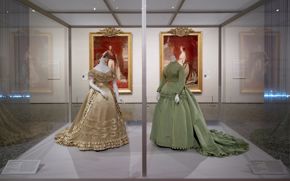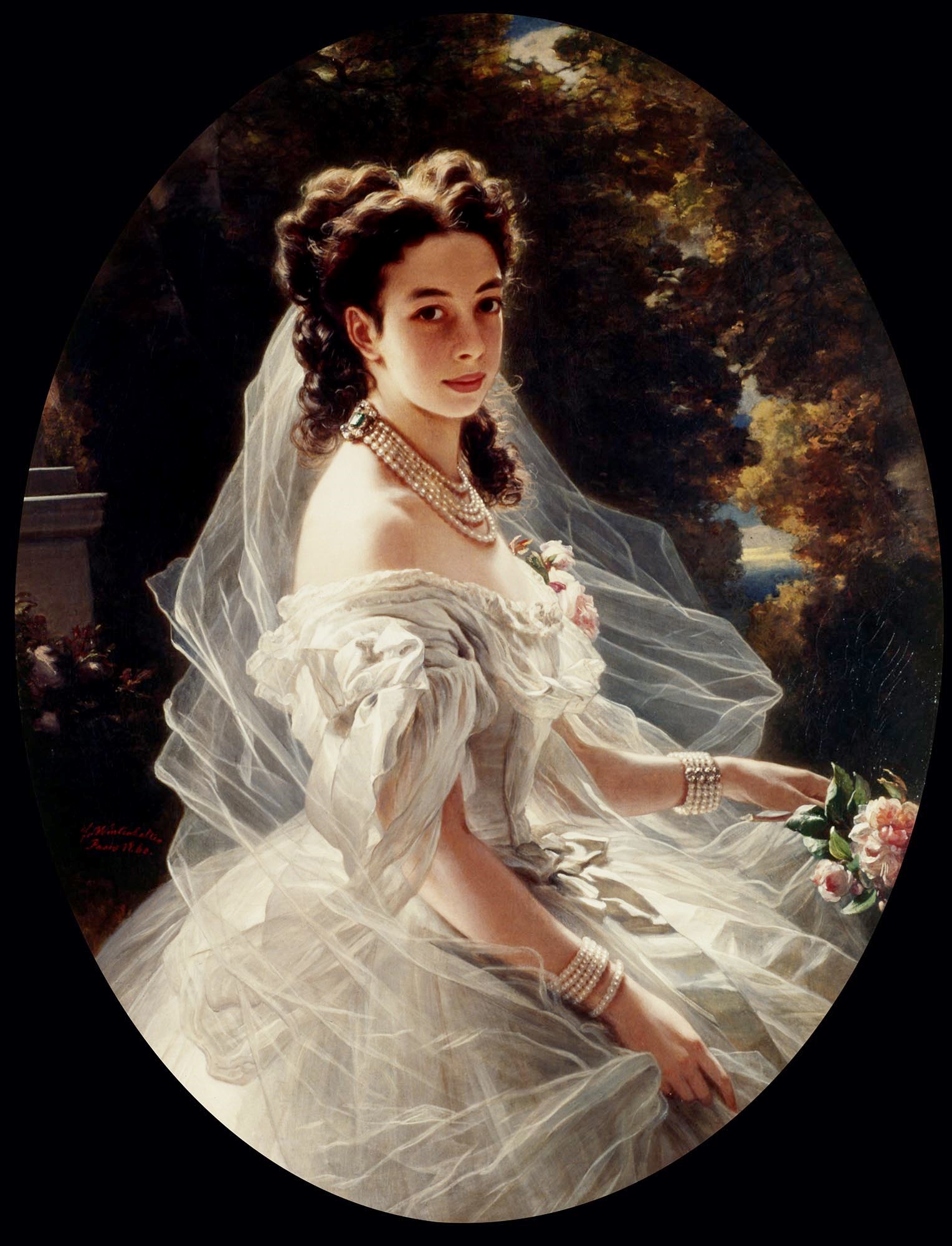Winterhalter, Meet Worth May 11, 2016

Exhibition view of High Society: The Portraits of Franz X. Winterhalter.
Franz X. Winterhalter, Empress Eugénie (Eugénie de Montijo Condesa de Teba) in 18th-Century Costume, 1854, oil on canvas, The Metropolitan Museum of Art.
Fashionable women all across 19th-century Europe once clamored to pose for Franz X. Winterhalter, because what could be trendier than a portrait by the painter who could best capture the delicate elegance of a chic gown designed by Charles Frederick Worth, the world’s first couturier?
The clientele of the two overlapped considerably, as Worth designed extensively for Napoleon III’s court and the French Empress Eugénie, who favored Winterhalter as her portraitist.
Before Empress Eugénie, however, there was one stylish princess who was the source of the craze for Winterhalter and Worth: Princess Pauline Clémentine von Metternich-Winneburg zu Beilstein (1836–1921), wife of the Austrian ambassador to the French court.

Franz X. Winterhalter, Pauline Sándor, Princess Metternich, 1860, oil on canvas, private collection.
Not especially known for her beauty—she was cruelly nicknamed le singe à la mode (the fashionable monkey)—the princess was nonetheless celebrated for her exquisite personal style, her wit, and her musical prowess. (She is also known for a topless duel with a countess, but that’s another story.) Winterhalter transforms Princess Metternich into a vision in his 1860 portrait (above), softening her strong features and illuminating the gauzy white gown most likely made by Worth.
Princess Metternich wore a Worth gown to a ball given by Empress Eugénie, who was so taken by the design that she subsequently ordered all of her evening looks from Worth. The empress set the styles at the French court, so nobility followed her lead. By the 1870s, the House of Worth had rocketed to international fame, with European and American women flocking to Paris for the latest Worth looks, which retained a monopoly in French fashion until the end of the 19th century.
High Society: The Portraits of Franz X. Winterhalter, on view through August 14, showcases works by both Winterhalter and Worth. (As a Houston Chronicle writer put it, “Eat your heart out, Scarlett O'Hara.”)





